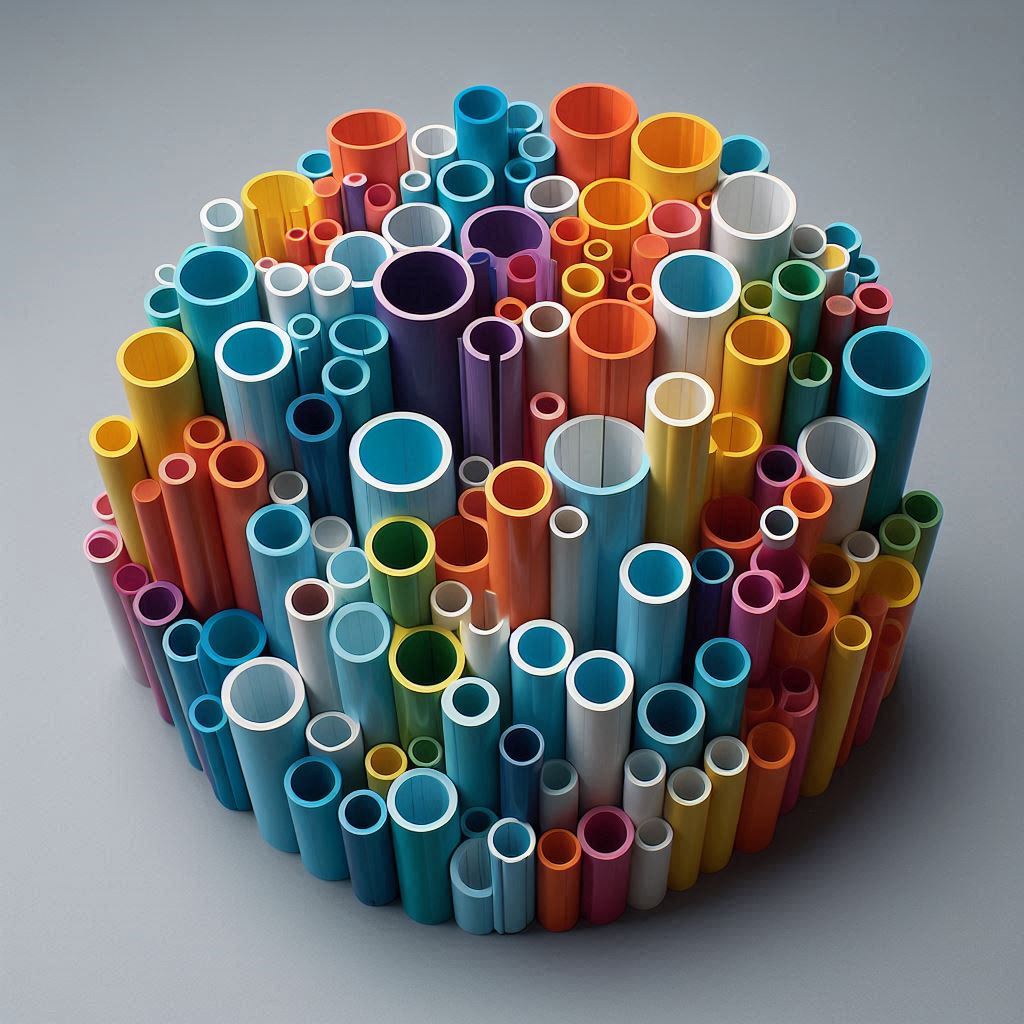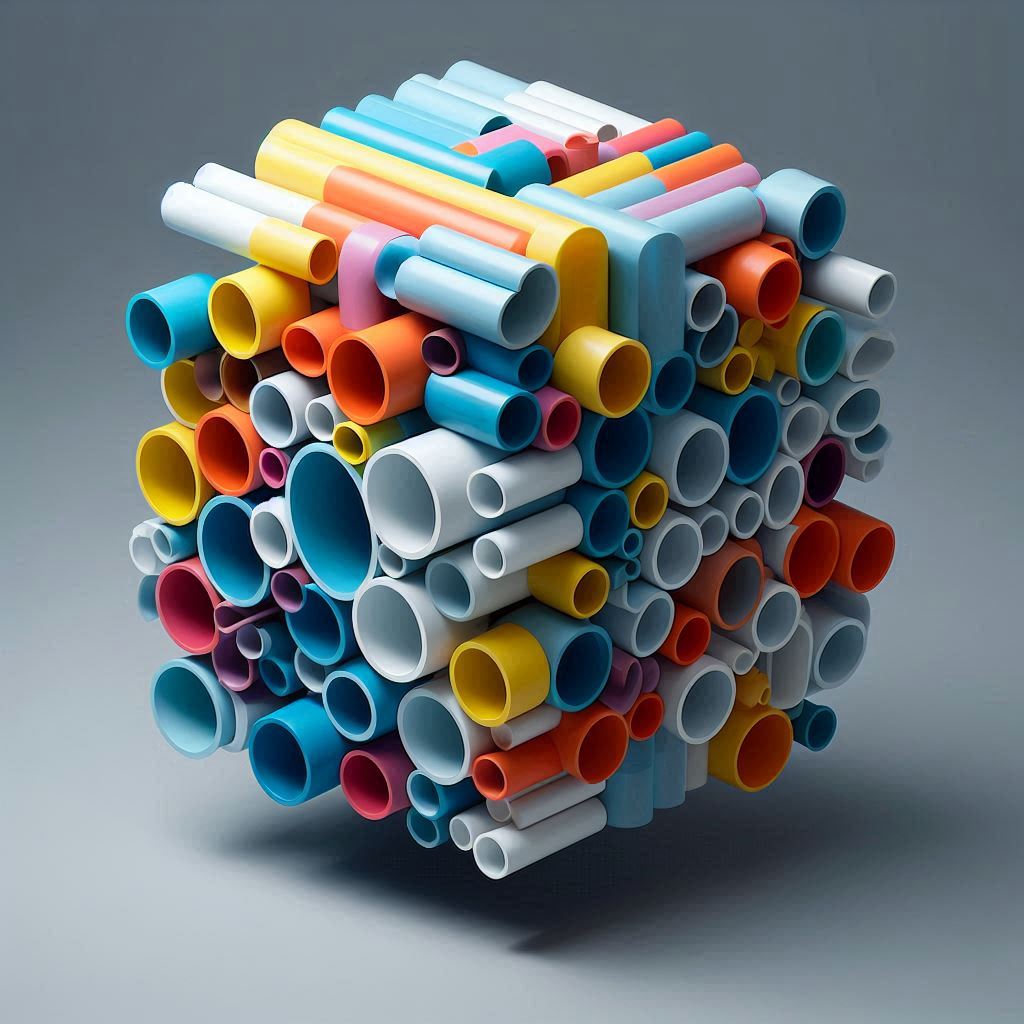Introduction to 1 1/2 Inch PVC Pipe
1 1 2 PVC Pipe: Divers into the world of construction and plumbing frequently encounter the 1 1/2 inch PVC pipe as a standout choice. Its remarkable adaptability and durability explain its popularity, not just a fluke. This comprehensive guide is designed to walk you through everything from what PVC is to its uses, how it’s made, and even some fun DIY projects.
What is PVC?
Definition and properties
PVC, or polyvinyl chloride, is a plastic widely renowned for its strength, light weight, and resistance to water and corrosion. This makes it ideal not only in plumbing but in countless other uses where reliability is key.
Comparison with other piping materials
PVC pipes often replace materials like copper and galvanized steel due to several advantages. They are less susceptible to corrosion, easier to install, and significantly cheaper, making them a smart choice for budget-conscious projects.
Specifics of 1 1 2 pvc pipe
Dimensions and measurements
The “1 1/2 inch” measurement refers to the nominal inside diameter, with wall thickness varying by the schedule or wall class, affecting flow rates and pressure handling.
Common uses in plumbing and construction
This size pipe is frequently used in residential plumbing for draining and vent stacking since it aligns well with the typical output size of various home fixtures.
Advantages of Using PVC Pipes
Cost-effectiveness
There’s a notable difference in cost if you’re deciding between PVC and metals. For tight budgets, PVC provides a robust option without the wallet bite.
Durability and longevity
One of the greatest advantages of PVC is its ability to stand the test of time without significant degradation.
Maintenance and corrosion resistance
In environments where metal pipes might rust or corrode, PVC excels by maintaining integrity over long periods, even in harsh chemical or saline exposures.
Manufacturing and Standards
How 1 1 2 pvc pipe are Made
Raw materials used
The primary ingredient in PVC pipes is polyvinyl chloride, combined with stabilizers and lubricants to refine the properties of the final product.
The manufacturing process
Manufacturing PVC involves extrusion of the heated materials through a die, which shapes the molten plastic into the stable form of a pipe.
Quality control measures
Close monitoring during manufacturing ensures that the pipes meet established thickness, diameter, and strength standards.
Standards and Certifications
International standards compliance (e.g., ASTM, ISO)
PVC pipes commonly adhere to strict standards like ASTM D1785 and ISO 9001 to guarantee reliability and safety.
Significance of certifications in quality assurance
These certifications help reassure the quality and compliance of plumbing installations, crucial for both safety and functionality.
Environmental Impact
Sustainability in production
Recent advancements aim to reduce the ecological footprint of PVC production by optimizing and recycling processes.
Recyclability and environmental considerations
PVC is recyclable and strategies are continually developing to enhance its lifecycle management and reuse.
Trends in eco-friendly manufacturing practices
Manufacturers are increasingly leaning into more sustainable practices, including the use of non-toxic and recycled materials.


Installation Techniques: 1 1 2 pvc pipe
Tools and Preparation
Essential tools for working with PVC
You’ll need basic tools like cutters, sandpaper for burrs, and specific PVC glue.
Pre-installation preparation steps
Measure twice, cut once! Ensuring precise measurements beforehand saves a lot of hassle later.
Step-by-Step Installation Guide: 1 1 2 pvc pipe
Cutting and measuring accurately
Always ensure you’re working with the exact lengths to avoid pressure issues and possible leaks.
Joining techniques: Gluing, threading, etc.
Gluing is the most common method, providing a watertight seal. Some connections might require threading based on pressure needs.
Troubleshooting Common Installation Issues: 1 1 2 pvc pipe
Solutions to common problems
Facing a leak? Make sure all fittings are secure, and seals are correctly applied.
Tips for ensuring a leak-free setup
Regular checks during installation can prevent future headaches.
Maintenance and Repairs: 1 1 2 pvc pipe
Routine Maintenance Tips
Inspection schedules
Regularly inspecting your PVC plumbing plays a crucial part in prolonged infrastructure health.
Cleaning and upkeep
Simple cleaning with soapy water helps maintain the pipes’ condition and functionality.
Common Issues and Fixes: 1 1 2 pvc pipe
How to deal with cracks and leaks
Small cracks can be patched, but larger ones might require section replacement.
When to repair vs. when to replace
If repairs become too frequent, it might be more cost-effective to consider replacing the problematic sections.
Advanced Maintenance Techniques: 1 1 2 pvc pipe
Techniques like pressure testing
This can identify vulnerability points before they turn into major issues.
Long-term preservation methods
Proper installation and occasional resealing can extend the life significantly.
Innovative Uses and Projects
Beyond Plumbing: Unique Uses of 1 1 2 pvc pipe
Creative minds have repurposed PVC into furniture, garden structures, and even art installations.
Creative projects and DIY ideas
Imagine constructing a frame for a small greenhouse or creating custom shelving units.
Case Studies: 1 1 2 pvc pipe
Real-life examples of innovative uses
From hydroponic gardens to designer room dividers, the adaptability of PVC pipes inspires incredible projects.
Impact of these projects
These ventures not only recycle materials but also foster inventiveness and personal expression.
Future Trends in PVC Applications
Technological advancements
As material science evolves, anticipate seeing PVC that’s even more durable and eco-friendly.
Predictions for new fields of application
Expect breakthroughs where PVC might be used in high-tech industries like aerospace for non-critical components.
Conclusion
Recap of Key Points
We’ve traversed through what 1 1/2 inch PVC pipes are all about, their benefits, and the broader impacts they have on industries and environments alike.
Final Thoughts on the Versatility and Importance of 1 1/2 Inch PVC Pipes
Their resilience, affordability, and flexibility make them indispensable in modern construction and beyond.
FAQs
What is the life expectancy of a 1 1/2 inch PVC pipe?
Typically, PVC pipes can last upwards of 50 to 70 years, depending on use and environmental conditions.
Can 1 1/2 inch PVC pipes be used for hot water systems?
PVC pipes are generally not recommended for hot water above 140°F as the heat can degrade the material.
How does UV exposure affect 1 1/2 inch PVC pipes?
Prolonged UV exposure can lead to brittleness, although exterior-grade PVC is treated to resist this.
What are the best practices for cutting 1 1/2 inch PVC pipes?
Use a dedicated PVC cutter for the cleanest, most even cuts.
Are there alternative materials recommended over PVC for specific applications?
In situations requiring high temperatures or pressures, materials like CPVC or metal might be more suitable.
Soft Vinyl Chloride: Unveiling The Secrets Of PVC





